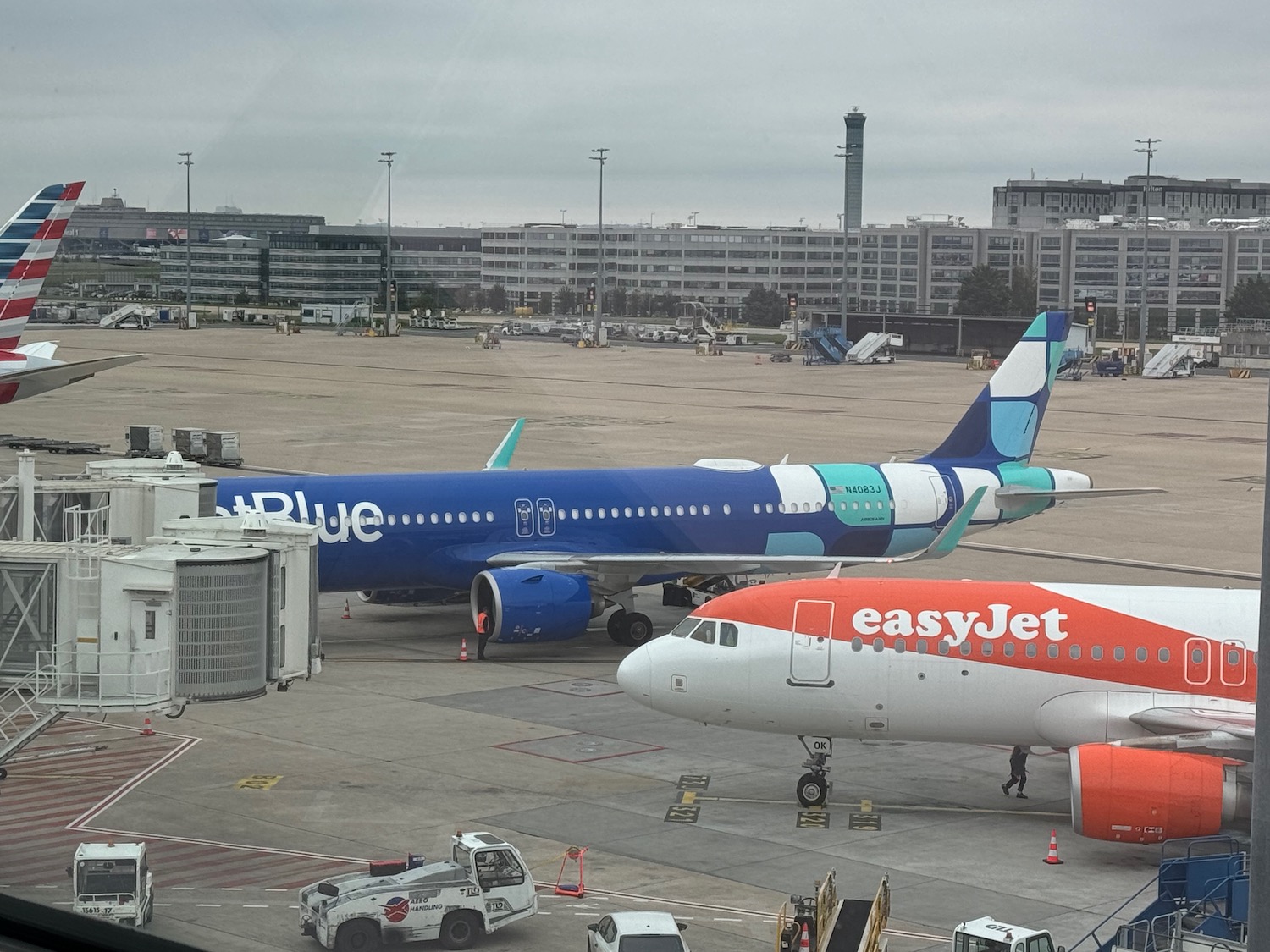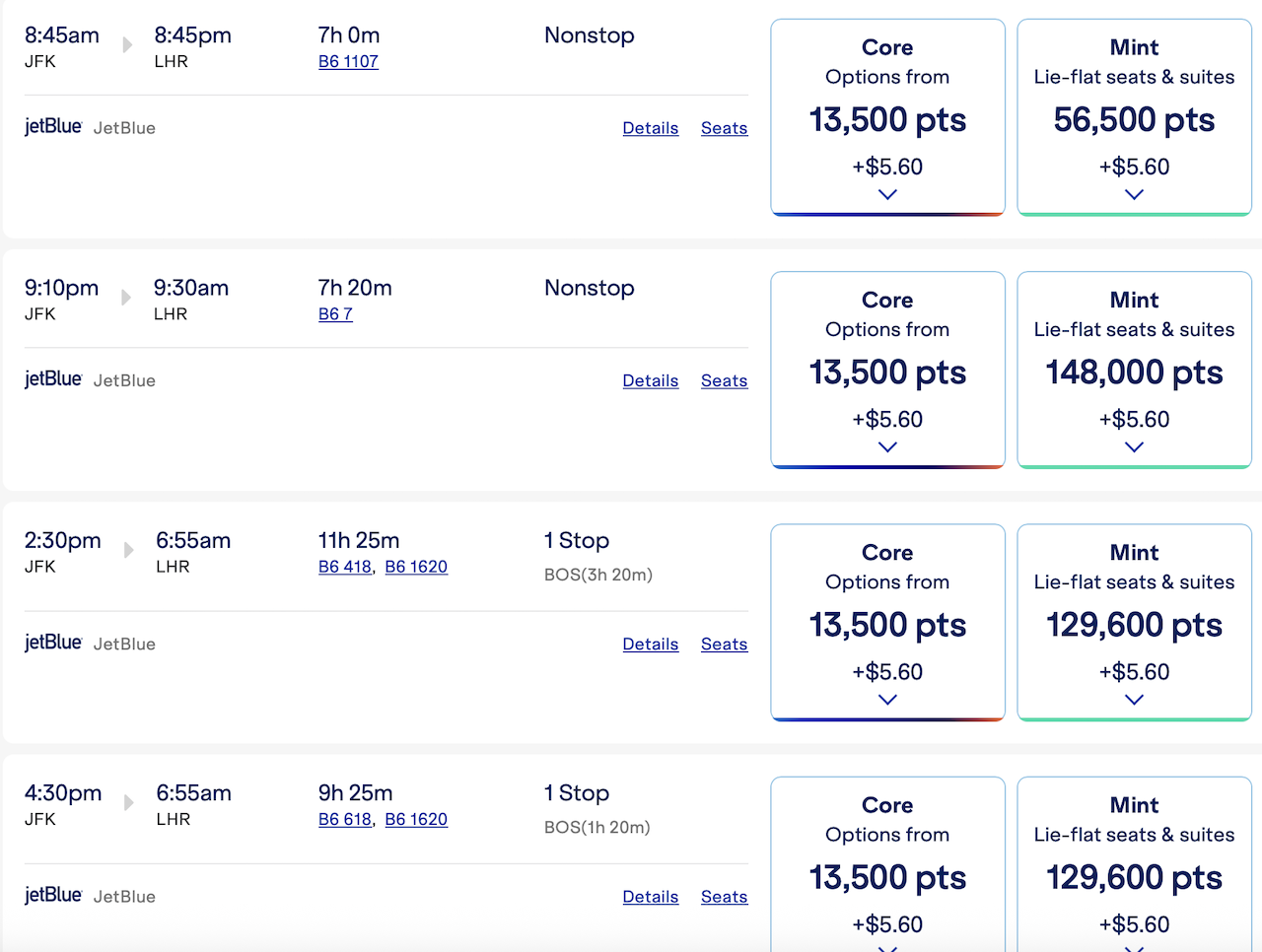Partnerships Show Low Value Of JetBlue’s Own Award Flights
JetBlue has expanded its TrueBlue mileage partnerships but it demonstrates the poor value JetBlue offers on their own flights.

JetBlue’s Partner Redemptions
JetBlue has added some incredible partners including Qatar, Japan Airlines, Condor, Etihad, and soon United. Both Hawaiian (now part of Alaska Airlines) and TAP go away at the end of this month. Cape Air is helpful for connections to very small markets, and Iceland Air has limited premium utility.
Some of those partner redemptions offer great opportunities with long haul flights in excellent premium cabins, like 90,000 points from Chicago to Abu Dhabi. Some travelers online have reported snagging even better deals in Japan Airlines’ business class to Tokyo from New York.
Condor, for the moment, is the only remaining partner from October 1st that will offer non-stop competing flights from the United States to continental Europe but their product, while nice, is not on the level of Mint.
Redemptions, at one point, were as low as 60,000 one-way on JAL to Tokyo in business class though these have seem to disappeared in recent weeks.
JetBlue’s Own Metal Redemptions
Some of the flights featured on partner airlines are as much as double the distance and flight time of those that JetBlue flies on its own metal. Flights from New York to London can be as low as 56,500 one-way on my recent searches for a very low period (anecdotal as it may be) but the majority range from 129,600-148,000. Compare that to United at 80,000, Air Canada Aeroplan at 70,000, Avianca Lifemiles at 63,000, or American at 57,000 – JetBlue is competitive on just one of four options. Other dates I searched ranged higher, from 90,000 or more.

The marginal cost of offering a business class award seat to an airline is less than $100. The cost of one more meal in business class, payment to a lounge partner (in the case of JetBlue), an amenity kit, and the extra fuel needed to transport the weight of the passenger and their luggage. The fixed costs do not factor in, because the flight will take place whether the seat flies empty or filled.
Even the amount the airline charges to partners is likely about $300-350 based on Star Alliance reimbursements as provided by OMAAT.
Comparing the cash prices for the exact same flights and dates, the value of TrueBlue points are 2.05¢/point, 1.22¢/point, and 1.12¢/point respectively.

On the lowest rate, as exemplified by competing programs, TrueBlue is right in the mix. But for a fare that’s just 25% more expensive ($300 in this case) results in a 229% surcharge in miles. A $645 difference (55% more than the lowest fare), incurs a 261% increase in TrueBlue points. What’s stranger still, is that a $300 difference doubles more than doubles the base rate, but a $345 increase from that rate only adds 18,400 TrueBlue points.
Sources at JetBlue have shared that C-suite management believe their program offers tremendous value and that the 80,000 point credit card offer (which in most cases would not equate to a one-way in Mint on a trans-Atlantic route) is among the best in the industry. It’s clearly not close.
TrueBlue Has To Decide Who It’s Going To Be
JetBlue has been transitioning for some time from an LCC carrier to a high value carrier, to an international carrier with a great business class product, branded lounges, and premium partners. But with that change, the program has to evolve as well. Consider the linked examples from Star Alliance carrier co-payments included before, it costs JetBlue at least three times as much to put TrueBlue travelers on partner airlines instead of in their own vacant seat.
If the carrier wants to compete with the likes of major carriers, not just for travelers but also for credit card customers, it will need to make its offering more competitive. And as the carrier struggles with profitability, it will also need to consider how it prices flights on its own metal with its own cost structure. Right now, they seem confused and erratic and rarely a good value for premium flights across the Atlantic.
What do you think?